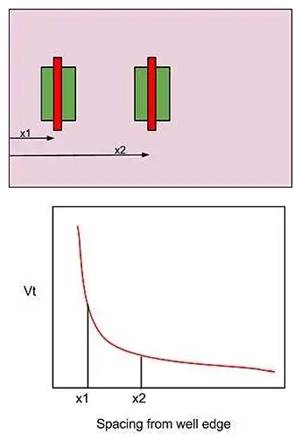请在MDK(keil)工程特点的“Target“-》”Code Generation“中勾
选”Use MicroLIB
条件是你有一个完好keil的工程 比方ADC的调试的时分许多时分用到串口 这儿教你怎么样使
用Printf 函数
赤色字句为要点!!!!!
若使得在程序中运用Printf需做一下几步
1,输入输出文件包括#include
2,在程序下增加宏界说代码
/* Private function prototypes ———————————————–*/
#ifdef __GNUC__
/* With GCC/RAISONANCE, small printf (option LD Linker->Libraries->Small printf set to Yes) calls __io_putchar() */
#define PUTCHAR_PROTOTYPE int __io_putchar(int ch)
#else
#define PUTCHAR_PROTOTYPE int fputc(int ch, FILE *f)
#endif /* __GNUC__ */
/* Private functions ———————————————————*/
3,增加如下2个函数 usart装备 和 重定向 C库的printf函数
/* System Clocks Configuration */
void RCC_Configuration(void)
{
/* Enable GPIO clock */
RCC_APB2PeriphClockCmd(USARTy_GPIO_CLK | USARTz_GPIO_CLK | RCC_APB2Periph_AFIO, ENABLE);
#ifndef USE_STM3210C_EVAL
/* Enable USARTy Clock */
RCC_APB2PeriphClockCmd(USARTy_CLK, ENABLE);
#else
/* Enable USARTy Clock */
RCC_APB1PeriphClockCmd(USARTy_CLK, ENABLE);
#endif
/* Enable USARTz Clock */
RCC_APB1PeriphClockCmd(USARTz_CLK, ENABLE);
}
/* System Clocks Configuration */
/* Configure the GPIO ports */
void GPIO_Configuration(void)
{
GPIO_InitTypeDef GPIO_InitStructure;
#ifdef USE_STM3210C_EVAL
/* Enable the USART3 Pins Software Remapping */
GPIO_PinRemapConfig(GPIO_PartialRemap_USART3, ENABLE);
/* Enable the USART2 Pins Software Remapping */
GPIO_PinRemapConfig(GPIO_Remap_USART2, ENABLE);
#elif defined(USE_STM3210B_EVAL) || defined(USE_STM32100B_EVAL)
/* Enable the USART2 Pins Software Remapping */
GPIO_PinRemapConfig(GPIO_Remap_USART2, ENABLE);
#endif
/* Configure USARTy Rx as input floating */
GPIO_InitStructure.GPIO_Pin = USARTy_RxPin;
GPIO_InitStructure.GPIO_Mode = GPIO_Mode_IN_FLOATING;
GPIO_Init(USARTy_GPIO, &GPIO_InitStructure);
/* Configure USARTz Rx as input floating */
GPIO_InitStructure.GPIO_Pin = USARTz_RxPin;
GPIO_Init(USARTz_GPIO, &GPIO_InitStructure);
/* Configure USARTy Tx as alternate function push-pull */
GPIO_InitStructure.GPIO_Pin = USARTy_TxPin;
GPIO_InitStructure.GPIO_Speed = GPIO_Speed_50MHz;
GPIO_InitStructure.GPIO_Mode = GPIO_Mode_AF_PP;
GPIO_Init(USARTy_GPIO, &GPIO_InitStructure);
/* Configure USARTz Tx as alternate function push-pull */
GPIO_InitStructure.GPIO_Pin = USARTz_TxPin;
GPIO_Init(USARTz_GPIO, &GPIO_InitStructure);
}
/* Configure the GPIO ports */
/* USARTy configuration ——————————————————*/
void USART_Configuration()
{
USART_InitTypeDef USART_InitStructure;
USART_InitStructure.USART_BaudRate = 230400;
USART_InitStructure.USART_WordLength = USART_WordLength_8b;
USART_InitStructure.USART_StopBits = USART_StopBits_1;
USART_InitStructure.USART_Parity = USART_Parity_Even;
USART_InitStructure.USART_HardwareFlowControl = USART_HardwareFlowControl_None;
USART_InitStructure.USART_Mode = USART_Mode_Rx | USART_Mode_Tx;
/* Configure USARTy */
USART_Init(USARTy, &USART_InitStructure);
/* Configure USARTz */
USART_Init(USARTz, &USART_InitStructure);
}
/* USARTy configuration ——————————————————*/
/*Retargets the C library printf function to the USART. */
PUTCHAR_PROTOTYPE
{
USART_SendData(USART1, (uint8_t) ch);
while (USART_GetFlagStatus(USART1, USART_FLAG_TC) == RESET)
{}
return ch;
}
/*Retargets the C library printf function to the USART. */
3,然后就可以在main()调用
printf(“The is a example!” );
printf(“%s%c%c%c%c%c%s”,
之类的输出函数









